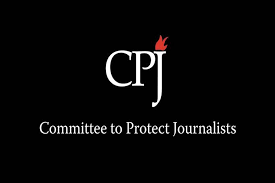A record number of journalists were killed worldwide in 2024, figures published today by the Committee to Protect Journalists (CPJ) show. Israel is responsible for nearly 70 per cent of that total.
At least 124 journalists across 18 countries were killed last year, making it the deadliest year for reporters and media workers since CPJ started keeping records more than three decades ago, reflecting surging levels of international conflict, political unrest and criminality worldwide.
The global upswing in killings (a 22 per cent increase from 2023) was largely driven by the Israel-Gaza war, which accounted for 85 journalist deaths, all at the hands of the Israeli military. Most of those killed, 82, were Palestinians. Sudan and Pakistan had the second-highest number of journalists and media workers killed in 2024, with six each. In Sudan, a devastating civil war has left thousands dead and millions displaced. While Pakistan had recorded no journalist fatalities since 2021, roiling political unrest in the country spurred a spike in killings.
“Today is the most dangerous time to be a journalist in CPJ’s history,” said CPJ CEO Jodie Ginsberg. “The war in Gaza is unprecedented in its impact on journalists and demonstrates a major deterioration in global norms on protecting journalists in conflict zones, but it is far from the only place journalists are in danger. Our figures show journalists under attack worldwide.”
She added: “The rise in journalist killings is part of a broader trend of muzzling the media globally. This is an issue that should worry us all—because censorship prevents us from addressing corruption and criminality, and from holding the powerful to account.”
At least 24 journalists worldwide were deliberately killed because of their work in 2024, CPJ found. In Gaza and Lebanon, CPJ documented 10 cases where journalists were murdered by the Israeli military, in defiance of international laws that define journalists as civilians during conflict. The remaining 14 journalist murders in 2024 took place in Haiti, Mexico, Pakistan, Myanmar, Mozambique, India, Iraq, and Sudan.
Freelancers, who report the news with the fewest resources and with considerable risk to their own safety, accounted for more than 35% (43) of all killings. In 2024, 31 cases were Palestinians reporting from Gaza, where international media continue to be barred from reporting from the Occupied Palestinian Territory, except for rare and escorted trips arranged by the Israeli military. CPJ has repeatedly advocated for Israel and Egypt to open access, and reiterates that call as part of the ongoing ceasefire.
In Latin America and the Caribbean, Mexico saw five killings in 2024, maintaining its standing as one of the world’s most dangerous countries for journalists. CPJ has found persistent flaws in Mexico’s mechanisms that are supposed to protect journalists. Haiti’s lawlessness sets it apart as gangs now openly claim responsibility for journalist killings, where two murders occurred amid gang rampant violence.
The Middle East and North Africa remained the region with the highest number of journalists and media workers killed in 2024, accounting for more than 78% (97) of the global total. Amid transitions following the December 8 toppling of Bashar al-Assad, Syria recorded the killing of four journalists, marking the return of the deadly attacks in the country. Syria has one of the worst records of letting journalists’ killers go free.
As part of its report, CPJ made a number of recommendations to improve journalist safety and provide accountability for journalists deaths, including the establishment of an international investigative task force focused on crimes against journalists.
In 2025, journalist killings continued at a rapid pace, with at least six journalists and media workers killed in the first weeks of the year.
GIK/APA


